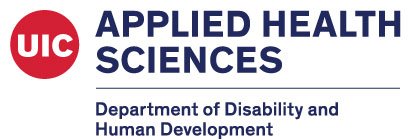Picture credit: Photo by Sharon McCutcheon on Unsplash
[The picture above depicts someone’s open left hand with fingers together with a plain blue background. Upon their hand is a variety of colors swirled together in a seemingly random pattern]
As behavior analysts, our code of ethics demands a certain level of competency when ethically changing the behaviors of others. With the footholds of globalization creeping onward, and a nation’s populace that is growing increasingly diverse (Fong & Tanaka, 2013), being culturally aware of the clients and their families in which this caring profession serves is paramount.
Translation? People have different abilities, repertoires, practices, and values that affect the way they behavior with themselves as well as others in their communities. In order to be effective in this world where borders are disappearing and travel is becoming exponentially less expensive, being culturally competent is, perhaps now more than ever, something that is necessary.
For the purposes of this article, culture will be defined as a group’s shared beliefs, values, and behaviors which are supported [through rewards and punishments to exert control] by others within their communities, broadly defined (Fong & Tanaka, 2013; Skinner, 1971). This can include ethnic groups, ability groups, groups that share values (religious, educational, etc.) which is a very broad definition. So much so, it might be ineffective to really target “cultural competency” on a whole. Which culture do we target? Are their overarching values across all cultures? People can, to complicate the analysis further, be at the intersection of two or more cultures (e.g. disability and ethnicity).
In my experience, awareness is not enough – there needs to be an awareness and analysis of not only those we serve, but of our own behaviors and perceptions as well. Clinicians’ learning histories and experience may affect the way they interact with others and ultimately, impact the quality of care for those they serve. Beyond clinical outcomes, these factors may also impact to the degree to which patient-focused care is implemented. As a result, I have compiled a few tools that may be helpful as a starting point for future clinical and research use. Each table below includes a hyperlink to a completed document that can be viewed on Google Drive.
· Table 1 includes a direct translation from Fong and Tanaka (2013) about how behavior analysts can include more culturally competent behaviors and values when working with others who may differ from them in a variety of ways. Future research could directly test the utility of each of these as it applies to clinical outcomes, therapist comfort in application, as well as how the people receiving services reacted – were their values included in on planning? Were the goals meaningful for them after they were reached?
· Table 2 depicts a variety of disability microaggressions that Keller & Galgay (2010) compiled that not only defines, but gives vocal-verbal examples of what these look like. Future clinical research could look at the frequency of how often these microaggressions are emitted then can be directly taught to clinicians regarding avoiding these or ways that do not promote a microaggression component.
· The Developmental Model of Intercultural Sensitivity (DMIS) is a tool that helps others to conceptualize where one might be between ethnocentrism (and inflexible towards other cultures) and ethnorelativism (flexible and integrating other cultures within self). Table 3, thus, was my attempt to applying this model to more concise behavioral commentaries in order to create actionable steps for applying in a clinical setting.
Perhaps the above resources only add to the concepts of saying, “look! Things are different! Respect that!” My hope are that others can use these resources and start applying it in their own clinical and community contexts. Actions speak louder than words, but if we do not have the right words to define what actions need to take place, we are lost in the static and nothing changes.
Be the change. Collaborate with others (including those you serve). Be aware of your own actions as it relates to working with others.
By Rocco Catrone
References
Fong, E., & Tanaka, S. (2013). Multicultural alliance of behavior analysis standards for cultural competence in behavior analysis. International Journal Of Behavioral Consultation And Therapy, 8(2), 20-22.
Keller, R. M. & Galgay, C. E. (2010). Microaggressive experiences of people with disabilities. In D. W. Sue (Ed.), Microaggressions and marginality: Manifestation, dynamic, and impact (pp. 241-267), Hoboken, NJ: John Wiley & Sons, Inc.
Skinner, B. F. (1971). Beyond freedom and dignity. Acton, MA: Coupley Publishing Group. Originally published in 1957 by the Meredith Corporation.













